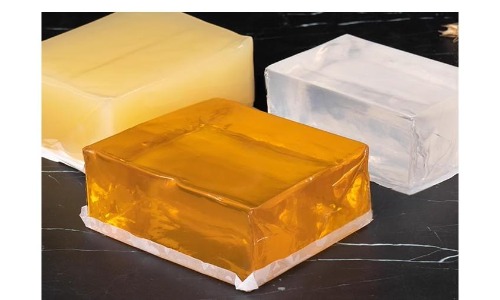
Electronic adhesives, also known as electronic and electrical adhesives, are used for bonding, sealing, potting, coating, structural bonding, co-extrusion lamination, and SMT patching of electronic and electrical components. The main types include: epoxy adhesives, silicone adhesives, Hot Melt Adhesives, pressure-sensitive adhesives (PSAs), and UV adhesives.
Five Major Industrial Applications of Electronic Adhesives:
01. Epoxy Adhesive
Epoxy adhesive, also known as epoxy resin or epoxy resin adhesive, is relatively low-cost and comes in various application forms. It appears as a transparent liquid and requires mixing components A and B to cure. The cured product exhibits characteristics such as water resistance, chemical corrosion resistance, and crystal clarity. It is the most widely used adhesive in the electronics industry due to its strong versatility, excellent bonding performance, wide adaptability, ease of use, good electrical properties, and resistance to aging.
02. Silicone Adhesive
Silicone adhesive is a semi-transparent paste-like, room-temperature curing bonding adhesive that forms a high-performance elastomer upon natural curing. It offers outstanding resistance to thermal cycling, aging, and excellent electrical insulation properties. It bonds well to most metallic and non-metallic materials. RTV (Room Temperature Vulcanizing) silicone rubber, a type of liquid silicone rubber, is widely used in electronics, electrical, automotive, and general industrial applications for bonding, fixing, sealing, potting, thermal conduction, and coating.
Silicone adhesive has an extremely wide range of applications. It is used not only as a specialized material in aerospace, cutting-edge technologies, and military sectors but also across various sectors of the national economy, including construction, electronics and electrical, textiles, automotive, machinery, leather and papermaking, chemical and light industry, metal and paints, as well as medical and healthcare industries.
03. Hot Melt Adhesive
Hot melt adhesive is a thermoplastic adhesive whose physical state changes within a certain temperature range while its chemical properties remain unchanged. It is non-toxic, odorless, and an environmentally friendly chemical product. It is primarily used for bonding leather, glass, metal, wood, luggage plastics, medical supplies, textiles, etc. Hot melt adhesives offer a more eco-friendly solution under conditions requiring rapid assembly, lower strength requirements, and moderate operating temperatures.
04. Acrylate Adhesive
Acrylate adhesives use polyacrylate as the single or main component. They come in both thermoplastic and thermosetting types. Acrylate adhesives are chosen primarily for their excellent electrical properties, stability, good aging resistance, transparency, and rapid curing. They provide superior bonding performance for metals, plastics, rubber, wood, paper, and other materials.
05. UV Adhesive
UV adhesive, also known as shadowless adhesive, photosensitive adhesive, or ultraviolet curing adhesive, is a type of adhesive that cures only upon exposure to ultraviolet (UV) light. It can be used as a bonding agent or as a base for paints, coatings, and inks. It is mainly used for self-bonding and mutual bonding of plastics in the crafts industry, as well as for bonding plastics to plastics, plastics to glass, plastics to metal, and other materials.
The application of adhesives in the electronics industry extends beyond mechanical fixation. They are also required to provide thermal conductivity, electrical conductivity, insulation, and meet demands for impact-resistant assembly, sealing, and substrate protection. With the global proliferation of smartphones, products featuring ultra-thin touchscreens and intelligent systems are highly sought after by consumers. Smartphone development continuously pursues lighter, thinner, and more aesthetically pleasing designs. As electronic products evolve, the requirements for bonding materials and processes are also becoming increasingly demanding.
 HOT LINE: 086-577-65159218
HOT LINE: 086-577-65159218












